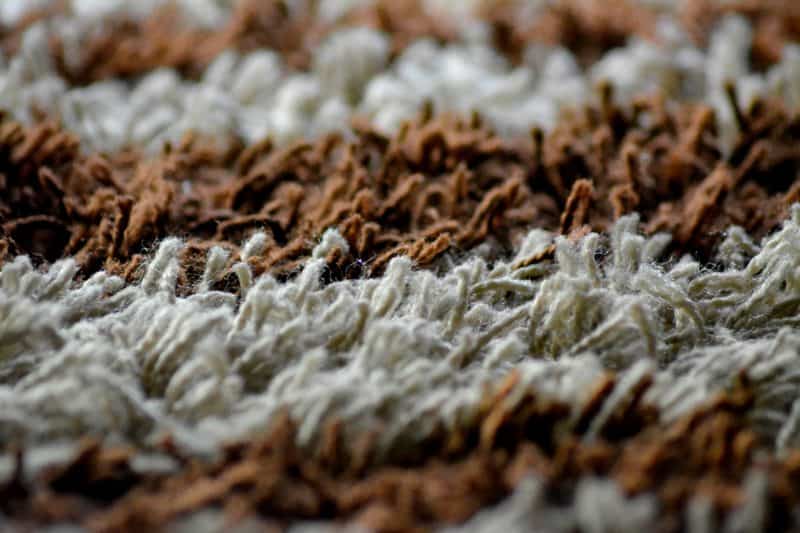The five-second rule when you drop something on the floor divides the nation. Whilst some people recoil in disgust at the thought of eating something that moments ago was on the ground, others simply shrug and pop the item back on their plate.
However, there are some unpleasant truths about the average carpet that suggest the five-second rule isn’t the most sensible idea after all.
People who walk on their carpets whilst wearing their outdoor shoe track in all sorts of dirt and germs from outside. This, along with pets and other everyday activities, all contribute to the deteriorating cleanliness of carpets.
Top 3 gruesome germs living in our carpets

Whilst you may think that your freshly vacuumed carpet is good and clean, there are hundreds of germs that are lurking amongst the fabric. Bacteria such as salmonella and E. coli are just some of the dangerous germs that live within houses without homeowners even knowing about them.
Salmonella is perhaps more widely associated with uncooked food, but the bacteria are also commonly found within the fibres of carpets. People who ingest salmonella usually experience stomach cramps, along with diarrhoea and fever. It wouldn’t take much for the bacteria to transfer onto food that’s been dropped onto the floor and then digested by the person who then eats it.
Households with pets are more at risk of bacteria, like salmonella, getting into their carpets. Animals can carry the bacteria in their intestines and then spread it when they defecate. Pets are also more likely to carry in dirt and other messy substances which can help make the carpet and soft furnishings unhygienic.
Escherichia coli, otherwise known as E. coli, is another type of bacteria that can cause serious stomach issues, as well as more serious side effects like kidney failure. The germ is most frequently found in the faeces of animals, unsafe water sources and contaminated food. However, E. coli is also found in the estimated 200,000 germs that can be identified in a square inch of carpet.
The bacteria that causes the ‘winter vomiting bug’ is also frequently recorded amongst the number of germs in carpets. Norovirus, as it is scientifically known, can cause sufferers to experience nausea and diarrhoea, as well as other flu-like symptoms such as headaches and a high temperature.
Someone suffering from norovirus can infect a carpet with germs if they vomit or defecate onto it. If this happens, it is key to clean up the mess straight away so that the risk of the bacteria getting spread throughout the house is reduced. It’s best to wear gloves and thoroughly clean your hands when clearing up messes so that the bacteria or virus can’t infect you too.
All of these germs mentioned, as well as the many other types of bacteria found in carpets, can cause health issues to residents of the house. Most families let children play on the floor, which is why babies and toddlers are particularly at risk of the bacteria as they are more likely to put bacteria-infected items into their mouths.
Although it’s virtually impossible to keep a carpet germ-free, making sure that the floor is regularly cleaned will reduce the risk of it carrying dangerous bacteria within the material. Dirty carpets can also carry strong odours, which is another reason that cleaning is important so that it can freshen up the carpet.
How often should I clean my carpet?
Studies have found that it’s important to vacuum carpets regularly, especially if you have pets or live in a dusty area. Households that frequently experience dirty carpets should try to vacuum every couple of days. However, some people choose to vacuum once or twice a week, depending on the state that they view the carpet to be in.
The vacuum cleaner should be pushed back and forth over the carpet in a grid method so that every section is cleaned. It’s also better to start from the edges of the room and work your way in, using straight strokes of the nozzle and head of the vacuum cleaner.
Rugs should also be vacuumed as they can contain just as many germs as carpets, especially if they are located near an exterior door that experiences a lot of footfall and collects lots of dirt and debris from outside.
Higher levels of bacteria are more likely to be found in homes with animals because of the germs that they pick up during walks and by the number of items that they touch or carry in their mouths. People that wear outdoor shoes inside on their carpets are also more at risk of tracking bacteria onto carpets, which is why many experts advise against wearing shoes inside unless the carpet and soft furnishings are cleaned on a regular basis.
Carpets that are frequently subjected to stains or dirt should be deep cleaned regularly, although experts say that all carpets should be deep cleaned at least once a year. This will help to remove all of the germs that have built up, as well as helping to improve the general colouration and health of the carpet.
It’s helpful to catch stains and spillages as and when they appear so that they can be dealt with quickly. This will help improve the general appearance of the carpet and could reduce the number of germs that live in the fibres.
How can I deep clean my carpet?

Although vacuuming carpets regularly is a good idea, it won’t fully clean the fibres or get rid of bacteria that has worked its way into the material. Vacuum cleaners will only remove the surface dirt, rather than stains or deep-set bacteria or fungal problems.
Aside from removing outdoor shoes before walking indoors, there are a number of other ways to reduce the number of germs and bacteria that are microscopically hidden in carpets.
Baking soda is reported to be a good way to freshen up carpets if the powder is sprinkled onto the floor. The cooking ingredient can remove odours and help improve stains if it is left on the carpet for around an hour and then vacuumed up.
Liquids that have dried are hard to remove, which is why it’s advisable to try cleaning the carpet as soon as something has been spilt. The best way to do this is to blot at the liquid so that the excess is removed before it can soak into the carpet fibres. Solid spillages, such as vomit or faeces, should be picked up. Rubbing at the mess can drive the bacteria and liquid down into the carpet and will make it harder to remove.
Germs such as E. coli is often found in animal faeces, which is why it is important to apply a cleaning solution to the problem area to make sure it is properly disinfected and any dangerous bacteria has been removed.
Distilled white vinegar can be mixed with cold water and sprayed onto the affected patch of carpet and then allowed to soak into the fibres. The floor should then be allowed to air dry in a properly ventilated room.
Clothes steamers can also be used to deep clean carpets, although it’s best to buy or rent a proper carpet cleaner to make sure the floor is fully disinfected and the germs have been removed. Using homemade cleaning solutions can end up having the opposite effect and could damage the carpets instead.
Although these DIY methods can help to improve the basic level of the carpet’s hygiene, the only way to ensure that a carpet has been properly deep cleaned is to hire a cleaning service. By hiring a professional cleaning company, you will know that they have the necessary equipment and cleaning products to remove germs and sanitise the carpet.
Carpets that are regularly cleaned – whether it is professionally or by using DIY methods – are less likely to contain harmful germs and bacteria. It’s important to stay on top of cleaning, especially if there are young children in the house who spend a lot of time on carpets.
Carpets can carry a whole host of germs, such as E. coli, salmonella and norovirus, but with regular cleaning, the risk of bacteria such as these is significantly lowered. The germs can cause health problems, which is why experts advise homeowners to vacuum their floors on a weekly basis and to clean up after pets and any other types of messes straight away.


